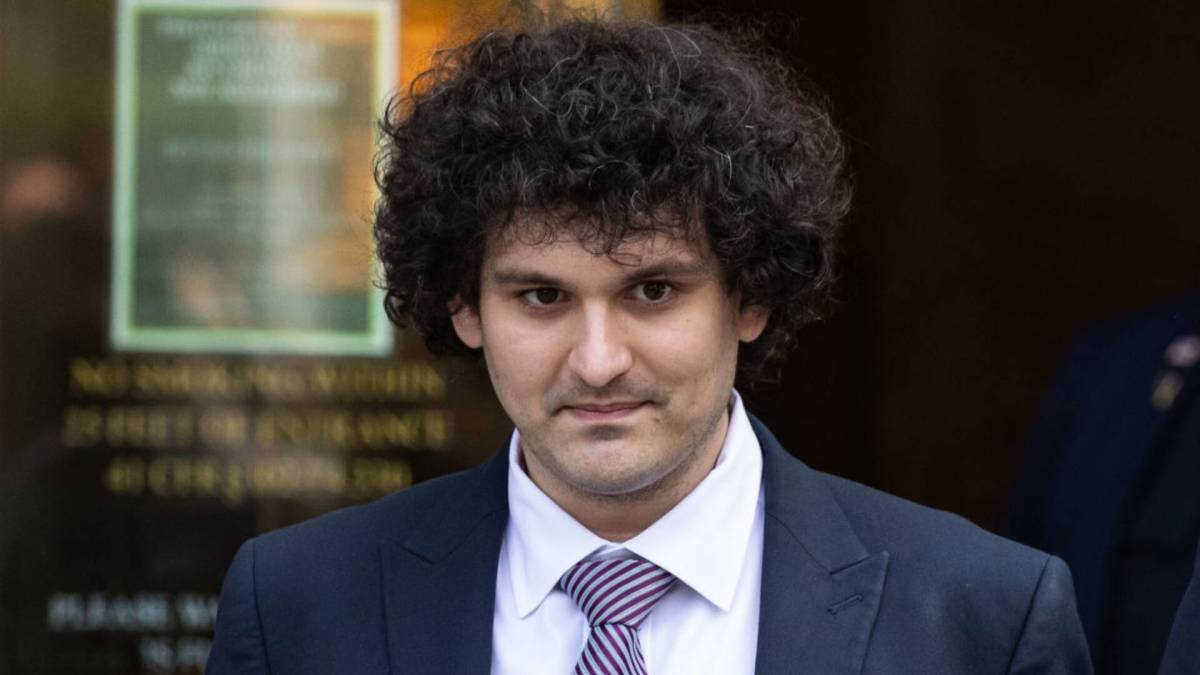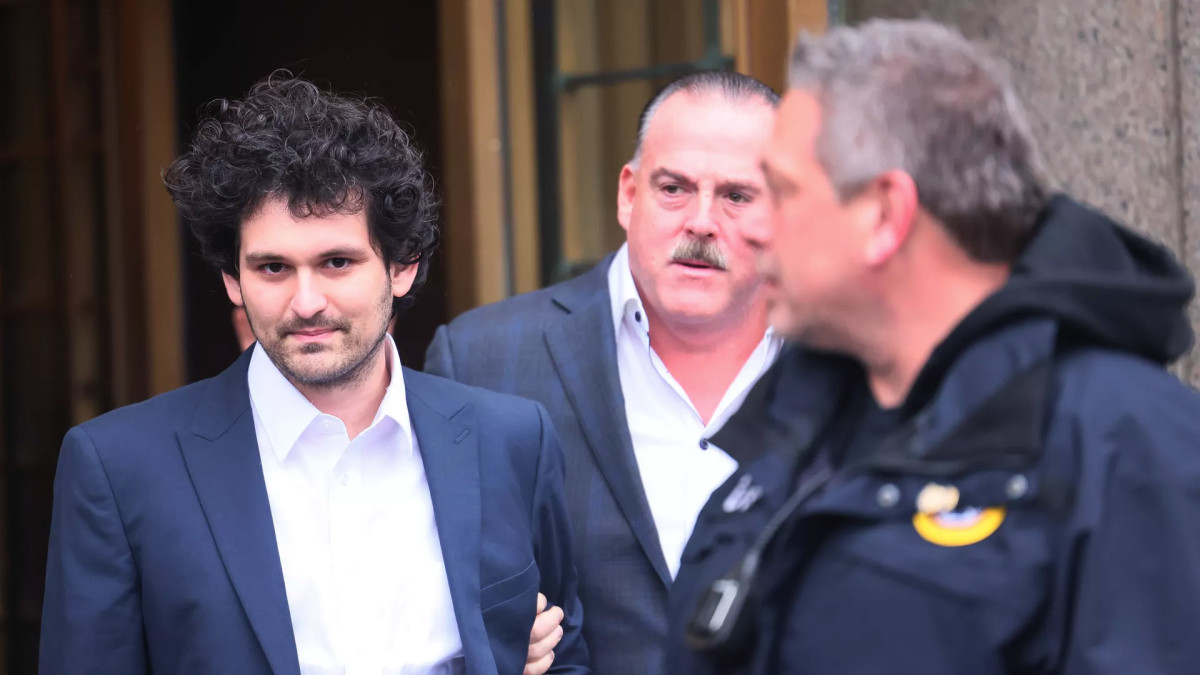
Who is Sam Bankman-Fried?
Sam Bankman-Fried is an American entrepreneur and investor. Often known by his initials, SBF, he was the founder and CEO of the cryptocurrency exchange FTX Trading Ltd. and its sister company, Alameda Research.
With more than a million users and a peak valuation of $32 billion, FTX was the world’s third-largest cryptocurrency exchange by volume before its spectacular implosion over the course of 10 days in November 2022. The company entered Chapter 11 bankruptcy proceedings and triggered a widespread contagion throughout the crypto world — over that period, Bitcoin, for example, lost more than 20% of its value.

What is Sam Bankman-Fried known for?
Sam Bankman-Fried had been one of the youngest people to make Forbes’ list of Richest Americans, amassing a net worth of $26 billion by his 30th birthday. Before the FTX scandal, he was lauded as a business genius. After that, the magazine later reported that his net worth had all but evaporated in 2023. His estimated worth is now just $4 million.
Related: What is blockchain and how does it work? Definition and applications
Who are Sam Bankman-Fried’s parents?
SBF’s mother, Barbara Fried, is a Stanford Law School professor who, before her retirement, specialized in tax policy and political theory. She founded a super PAC called Mind the Gap, which provided statistical analysis on giving patterns for Democratic candidates running for the House of Representatives.
His father, Joseph Bankman, is also a law professor at Stanford as well as a clinical psychologist. He is considered an expert in the field of tax law and has even published scholarly articles on the specific applications of tax law to Silicon Valley startups.
On September 19, 2023, FTX, under the new leadership of John Ray III, filed a lawsuit against Barbara Fried and Joseph Bankman, alleging that they misused company funds for personal gains, specifically citing a cash gift totaling $10 million and property in the Bahamas valued at $16.4 million.
Fried and Bankman have denied the allegations.
What is Sam Bankman-Fried’s educational background?
SBF studied physics and mathematics at the Massachusetts Institute of Technology, where he graduated in 2014. The summer before graduation, he worked as an intern at Jane Street Capital, a hedge fund that used statistical models to trade securities. SBF was tasked with trading international exchange-traded funds (ETFs).
After graduation, SBF moved to Berkeley, California, where he briefly worked as Director of Development for the Centre for Effective Altruism. SBF said he believed in pursuing a career in altruism, "not based on personal interest but on the projects that are proven by data to be the most effective at helping people." He was a major donor to Democratic political campaigns, giving as much as $93 million to candidates and political action funds in an attempt to make crypto mainstream.
But court documents allege that hundreds of these political donations were illegal. He is also being charged with securities fraud and money laundering. He, along with other FTX executives, had been residing in a group villa in the Bahamas before he was arrested in December 2022 and extradited to the United States. There, he posted a $250 million bond.
SBF had been living under house arrest with his parents until August 11, 2023, when Manhattan Federal District Court Judge Lewis A. Kaplan revoked his bail and ended his at-home living arrangement. SBF was sent to jail on the grounds that he had been intimidating witnesses, including his former girlfriend, Caroline Ellison. Now he will remain in prison until his trial begins on Oct. 3, 2023. If convicted on all counts, he could face up to 115 years in prison.
Who is Sam Bankman-Fried’s girlfriend?
SBF and Caroline Ellison met at Jane Street; they also began an on-again, off-again relationship when he hired her to work as a trader at Alameda Research. In 2021, Ellison was promoted to the position of co-CEO alongside Sam Trabucco until he stepped down in August 2022.
Like SBF, Ellison majored in mathematics. She graduated from Stanford University, where she served as vice president of the effective altruism club. Her first job was to use mathematical models to identify investment opportunities at Jane Street.
Ellison is considered a star witness in the case against SBF because she maintained private journals detailing FTX’s final months from their luxury compound in the Bahamas. Ellison pled guilty to fraud charges and faced a maximum 110-year prison sentence. She has been cooperating with authorities with the hopes that her sentence will be reduced.
How did Sam Bankman-Fried make his money?
In 2017, SBF founded Alameda Research, a name he chose because he said it made the cryptocurrency arena sound more credible. At the time, crypto trading was largely unregulated, although it was facing growing scrutiny from financial institutions.
Alameda’s main strategy was Bitcoin arbitrage, the practice of buying assets in one currency and selling in another — and profiting from the price difference.
Originally based in Berkeley, California, SBF moved operations to Hong Kong in 2018. In 2019, he opened FTX and moved the companies again, this time to the Bahamas.
Alameda Research was FTX’s sister company as well as its market maker, and it spurred exponential growth. Not long after its inception, FTX issued its own cryptocurrency token called FTT. Alameda soon became the largest holder of FTT, which inflated its price and potentially misled investors. FTX exceeded $1 billion in revenues in 2021 and claimed to have $13 billion in assets that same year.
Why did Sam Bankman-Fried get arrested?
In early November 2022, Binance, the world’s largest crypto exchange and one of FTX’s biggest investors, attempted to acquire the company. But due diligence revealed mounting concerns over FTX’s financial stability. Binance backed away from the deal, instead announcing on Nov. 9 that it would sell all of its holdings of the FTT token. Since trading volume was so low, the sale had a major effect on FTT’s price, causing it to plummet from $22 to $1.50 in just a few days.
Binance’s CEO, Changpeng Zhao, publicly criticized Bankman-Fried’s lobbying efforts and accused FTX of mishandling customer funds. An anonymous source claimed that Bankman-Fried had transferred up to $4 billion in customer deposits from FTX to shore up losses at Alameda Research.
At the same time, the Securities & Exchange Commission (SEC) and Commodities Futures Trading Commission (CFTC) announced they were investigating FTX as well as its connections to Bankman-Fried’s other assets.
According to reports, Bankman-Fried launched a last-ditch effort to save FTX on Nov. 10. Between $1 and $2 billion of customer funds vanished overnight. The company claimed it had suffered a cyberattack — these funds appeared in “unauthorized transactions,” which FTX said it is still investigating.
Bankman-Fried claimed it was merely “sloppy accounting” and not criminal activity that was to blame for his company’s spectacular failures. He announced that Alameda would be “winding down operations” on Nov. 10; on Nov. 11, it, along with FTX, declared bankruptcy. Bankman-Fried resigned that same day.
Is Sam Bankman-Fried going to prison?
Bankman-Fried was arrested in dramatic fashion on Dec. 12, 2022. The U.S. Department of Justice had cabled the attorney general of the Bahamas, stating:
“Lawfully obtained documentary evidence and various witness interviews indicate that Bankman-Fried personally accumulated billions of dollars from his involvement in the criminal conspiracy: thus, he has the means, and may soon have the motive, to flee The Bahamas.”
Bankman-Fried was incarcerated for 10 days at the Fox Hill detention facility in Nassau. He told Forbes, “I thought it was going to be like The Shawshank Redemption.” Instead, he showered with a cold hose and slept on a bed made of cardboard. His usual vegan diet was replaced with peanut butter on stale Wonder Bread and fresh fruit.
SBF was extradited to the United States on Dec. 21. He faces a total of 12 counts of commodities fraud, wire fraud, securities fraud, money laundering, and conspiracy to violate campaign finance laws. In addition, the Commodities Futures Trading Commission has accused SBF of price manipulation and front-loading customers.
Reports have surfaced describing how he joked with FTX executives over the misplacement of customer funds, saying “We sometimes find $50 million of assets lying around that we lost track of; such is life.”







